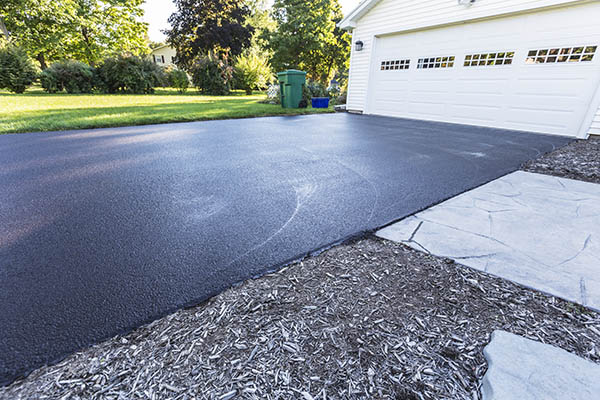Maximize Toughness: Warm Mix Asphalt Sealing for Angled Parking Structures
Maximize Toughness: Warm Mix Asphalt Sealing for Angled Parking Structures
Blog Article
Warm Mix Asphalt: A Lasting Remedy for Sidewalk
Warm Mix Asphalt (HMA) has emerged as a leading lasting selection for pavement options, supplying a myriad of innovative technologies and environmental advantages. Its capability to reuse materials and lower power consumption offers an engaging case for its adoption in road building and construction projects. The long-lasting performance and longevity of HMA make it a recommended option for infrastructure development. As the demand for environment-friendly building methods expands, exploring the nuances of HMA's sustainability can offer important understandings right into the future of pavement remedies.
Environmental Advantages of Hot Mix Asphalt

In Addition, Hot Mix Asphalt assists to mitigate urban warm island effects. Its dark color soaks up sunshine, minimizing the quantity of warmth mirrored back into the atmosphere compared to lighter-colored sidewalks. This can lower ambient temperature levels in city locations, reducing the demand for air conditioning and ultimately minimizing power consumption.
In enhancement, Warm Mix Asphalt contributes to improved stormwater administration. Its porous nature permits water to charge and penetrate the sidewalk groundwater products, lowering runoff and the danger of flooding. These environmental benefits make Warm Mix Asphalt a lasting choice for leading freeways and roadways.
Energy Performance in HMA Manufacturing
Is power effectiveness an essential element in the manufacturing of Hot Mix Asphalt (HMA)? Power plays a considerable role in the manufacturing of HMA, affecting both cost and ecological sustainability. One essential facet of energy performance in HMA production is the use of warm mix asphalt (WMA) innovations.
In addition, advancements in plant modern technologies have actually led to even more energy-efficient HMA manufacturing processes. By enhancing power use in HMA production, the sector can decrease its carbon footprint while preserving high-quality sidewalk materials.
Recyclability of Hot Mix Asphalt
The recyclability of Warm Mix Asphalt (HMA) is a crucial element of its sustainability and long-lasting ecological impact. HMA is just one of the most recycled materials in the USA, with over 100 million loads of reclaimed asphalt pavement (RAP) being reused every year in new pavement building. Recycling HMA supplies several environmental benefits, such as lowering the demand for virgin materials, lowering energy consumption during production, and reducing the quantity of waste sent out to land fills.
The procedure of reusing HMA entails grating the existing pavement, squashing it right into smaller items, and blending it with new aggregate and asphalt binder to develop a recycled mix. Generally, the recyclability of HMA plays a significant role in advertising sustainable practices within the sidewalk market.

Long-Term Performance of HMA
Asphalt pavements show sturdiness and resilience over a prolonged duration, showing the lasting efficiency of Warm Mix Asphalt (HMA) The long life of HMA can be connected to its capacity to hold up the original source against heavy web traffic tons, severe weather condition conditions, and the impacts of aging. Research studies have actually revealed that well-designed and correctly built HMA pavements can last for 20 years or even more with normal upkeep. The secret to making best use of the lasting efficiency of HMA exists in making use of high-grade products, complying with best practices in building and construction, and carrying out efficient maintenance strategies. Correct water drainage, routine evaluations, and timely repair work are essential for maintaining the architectural integrity of HMA sidewalks with time. In addition, improvements in HMA modern technology, such as the use of polymer-modified binders and cozy mix asphalt, have even more improved the resilience and longevity of HMA sidewalks. By prioritizing top quality building and maintenance practices, HMA remains to prove itself as a cost-effective and lasting service for long-lasting pavement framework.

HMA: Longevity and Sustainability
Showing both sturdiness and sustainability, Warm Mix Asphalt (HMA) has actually come to be a keystone in the construction of durable pavement frameworks - regrading. HMA's resilience originates from its capability to withstand hefty lots, extreme weather, and high website traffic volumes, making it a reliable option for highways, highways, and airport terminal runways. The composition of HMA, which typically includes accumulations, binder, and filler, plays an important duty in enhancing its durability and resistance to tear and put on
Furthermore, HMA's sustainability exists in its recyclability and energy-efficient manufacturing process. The capability to recycle reclaimed asphalt pavement (RAP) in brand-new HMA combinations decreases the need for virgin products and decreases the ecological influence of pavement building and maintenance. In addition, the power efficiency of producing HMA hinges on its reduced blending temperature levels compared to other pavement products, resulting in minimized power intake and greenhouse gas emissions.
Conclusion
To conclude, hot mix asphalt (HMA) offers a sustainable service for pavement with its ecologically friendly qualities. read HMA's recyclability, energy effectiveness in manufacturing, and long-lasting toughness make it an eco-friendly choice for roadway construction. By conserving natural deposits, lowering waste, and decreasing greenhouse gas exhausts, HMA plays an essential function in advertising sustainability in infrastructure advancement. Its capability to alleviate metropolitan warmth island results additionally emphasizes its value in creating resistant and eco mindful pavement systems.
HMA is one of the most recycled products in the United States, with over 100 million heaps of recovered asphalt pavement (RAP) being reused annually in brand-new sidewalk construction.The discover here procedure of recycling HMA entails grating the existing pavement, crushing it into smaller sized pieces, and blending it with new accumulation and asphalt binder to create a recycled mix.Asphalt sidewalks demonstrate durability and strength over an extended duration, reflecting the lasting performance of Warm Mix Asphalt (HMA) Furthermore, advancements in HMA innovation, such as the usage of polymer-modified binders and cozy mix asphalt, have actually even more enhanced the toughness and durability of HMA sidewalks. The ability to recycle redeemed asphalt sidewalk (RAP) in brand-new HMA mixtures decreases the demand for virgin products and minimizes the environmental impact of sidewalk building and construction and maintenance.
Report this page